
Asteroids is a space-themed multidirectional shooter arcade video game designed by Lyle Rains and Ed Logg released in November 1979 by Atari, Inc. The player controls a single spaceship in an asteroid field which is periodically traversed by flying saucers. The object of the game is to shoot and destroy the asteroids and saucers, while not colliding with either, or being hit by the saucers' counter-fire. The game becomes harder as the number of asteroids increases.

The Intellivision is a home video game console released by Mattel Electronics in 1979. It distinguished itself from competitors with more realistic sports and strategic games. By 1981, Mattel Electronics had close to 20% of the domestic video game market, selling more than 3.75 million consoles and 20 million cartridges through 1983. At its peak Mattel Electronics had about 1800 employees in several countries, including 110 videogame developers. In 1984, Mattel sold its video game assets to a former Mattel Electronics executive and investors, eventually becoming INTV Corporation. Game development ran from 1978 to 1990, when the Intellivision was discontinued.

BurgerTime, originally released as Hamburger in Japan, is an arcade video game from Data East. It was published in 1982 for the DECO Cassette System. The player controls chef Peter Pepper who walks across oversized ingredients in a maze of platforms and ladders, causing them to fall and stack on buns below, eventually creating complete burgers. The chef is pursued by anthropomorphic hot dogs, fried eggs, and pickles. A limited supply of pepper can be thrown at aggressors immediately in front of Peter, briefly stunning them.

Mouse Trap is a maze video game developed by Exidy and released in arcades in 1981. It is similar to Pac-Man, with the main character replaced by a mouse, the dots with cheese, the ghosts with cats, and the energizers with bones. After collecting a bone, pressing a button turns the mouse into a dog for a brief period of time. Color-coded doors in the maze can be toggled by pressing a button of the same color. A hawk periodically flies across the maze, unrestricted by walls.

Utopia is a 1982 strategy video game by Don Daglow released for the Intellivision and Mattel Aquarius. It is often regarded as among the first city building games, and credited as "arguably the earliest ancestor of the real-time strategy genre." In July 2010, the game was re-released on Microsoft's Game Room service for its Xbox 360 console and for Games for Windows Live.
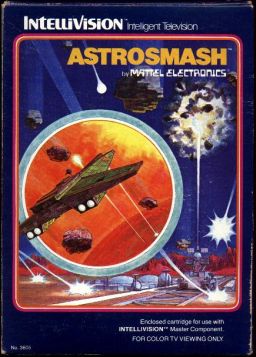
Astrosmash is a fixed shooter video game for the Intellivision console, designed by John Sohl, and released by Mattel Electronics in 1981. The player uses a laser cannon to destroy falling meteors, bombs, and other targets.
Reactor is an arcade video game released in 1982 by Gottlieb. The object of the game is to cool down the core of a nuclear reactor without being pushed into its walls by swarms of subatomic particles. Reactor was developed by Tim Skelly, who previously designed and programmed a series of vector graphics arcade games for Cinematronics, including Rip Off. It was the first arcade game to credit the developer on the title screen. Reactor was ported to the Atari 2600 by Charlie Heath and published by Parker Brothers the same year as the original.
Blaster is a first-person rail shooter released as an arcade video game by Williams Electronics in 1983. It was developed by Eugene Jarvis and Larry DeMar. A vague sequel to Robotron: 2084, the game is a shoot 'em up set in outer space. The goal is to destroy enemies, avoid obstacles, and rescue astronauts in twenty levels, to reach paradise.
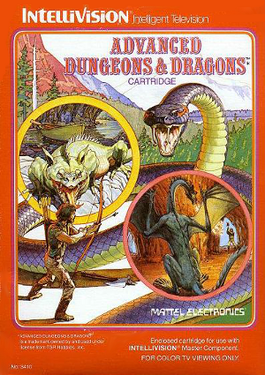
Advanced Dungeons & Dragons is an Intellivision game and was one of the first Advanced Dungeons & Dragons games to be licensed by TSR, Inc. It was later retitled to Advanced Dungeons & Dragons: Cloudy Mountain to distinguish it from the sequel, Advanced Dungeons & Dragons: Treasure of Tarmin. It is the first Intellivision cartridge to use more than 4K of ROM.

Loco-Motion, known as Guttang Gottong in Japan, is an arcade puzzle game developed by Konami in 1982 and released by Sega in Japan. The North American rights were licensed to Centuri. In Loco-Motion, the player builds a path for their unstoppable locomotive by moving tracks which will allow it to pick up passengers.
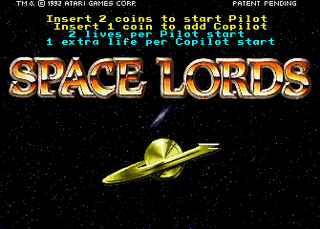
Space Lords is a video game released in arcades by Atari Games in 1992. It is a first-person perspective space combat video game.

Solar Quest is a monochrome vector arcade game created by Cinematronics in 1981. It was designed and programmed by Scott Boden, who previously worked on Star Castle. It had a home release for the Vectrex system in 1982.

Armor Battle is a video game written by Chris Kingsley for the Intellivision and published by Mattel in 1979. One of the earliest games available for the console, Armor Battle pits two players against each other in a contest to see which player can eliminate their opponent's stock of tanks first.
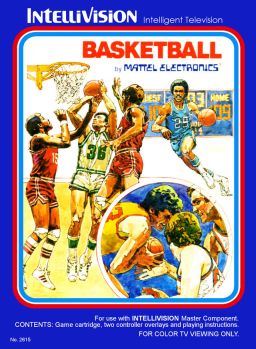
Basketball is a multiplayer sports video game produced by Mattel and released for its Intellivision video game system in 1980. The players each control a basketball team competing in four timed quarters of game play. Mattel obtained a license from National Basketball Association and used the NBA logo in its box art, making it the first basketball video game to be licensed by the NBA. NBA Basketball does not use any official team or player names. It was sold by Sears for its private-label version of the Intellivision console, the "Super Video Arcade", without the NBA name or logo.

Triple Action is an action video game produced by Mattel Electronics for its Intellivision video game system in 1981. The game actually includes three separate games—racing, tank combat and flying—where two players compete against each other for the best score.
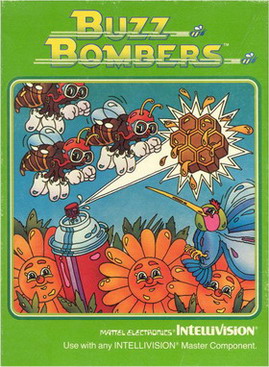
Buzz Bombers is a fixed shooter video game developed by Mattel Electronics for its Intellivision system and released in 1982. Mattel's reaction to Atari's popular Centipede, the player controls a can of bug spray trying to ward off swarms of bees.

Auto Racing is a racing video game written by Larry Zwick and released by Mattel for its Intellivision video game console in 1980. Auto Racing pits two players against each other using a top-down perspective on one of five different race courses. Auto Racing was released under the same name by Sears for its private-label version of the Intellivision console, the Super Video Arcade.

Skiing is a sports video game produced by Mattel and released for its Intellivision video game system in 1980. Up to six players compete individually on either a downhill or slalom course to see who can finish the fastest. For the game's initial release, Mattel obtained a license from the U. S. Ski Team and used its name and logo in the game's box art. In 1988, INTV Corporation released an enhanced version of the game entitled Mountain Madness: Super Pro Skiing.

Snafu is a video game released by Mattel for its Intellivision video game system in 1981. One of a number of snake games released in the late 1970s and early 1980s, Snafu features players controlling ever-lengthening serpents as they attempt to corner their opponents and trap them.
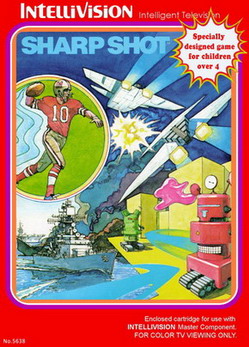
Sharp Shot is a video game released by Mattel for its Intellivision video game system in 1982. Specifically marketed towards younger children, Sharp Shot is a collection of four simple games where the object is to score points by correctly timing shots at various targets.


















